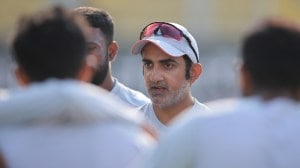On 16 November 2016, Delhi woke to a morning when the skyline disappeared behind a dense grey haze. Schools were shut for the first time after the Air Quality Index reached hazardous levels.
In the days that followed, hundreds of parents gathered at Jantar Mantar demanding action. What began as scattered demonstrations grew into national networks like Warrior Moms, founded by Bhavreen Kandhari — now a collective of more than 25,000 citizens across India. Their message was simple: clean air is everyone’s right.

A public health crisis
Every year, with the onset of winter, Delhi’s air quality worsens significantly due to a combination of factors like low winds, industrial emissions, dropping temperatures, and stubble burning. Hospitals across the Delhi-NCR region see a surge of patients with respiratory and other pollution-related illnesses in October and November.
“More people lose their lives each year due to air-pollution-related diseases than the number who died during the Covid pandemic,” says Dr Arvind Kumar, Thoracic (Chest) Surgeon, Medanta Hospital, Gurugram. “Because there is no immediate threat of death, unlike with Covid, neither the public nor governments are taking it seriously. If pollution is not curbed, the next 20 years will be remembered for the deaths it causes.”
Doctors warn that children in Delhi are growing up with weaker lungs compared to their peers in less polluted regions. “22 mg of PM2.5 is equivalent to smoking one cigarette. So, if the PM2.5 level on a given day is around 500, then breathing that air for 24 hours, roughly 25,000 breaths, is comparable to smoking 25 cigarettes. In other words, we are effectively exposed to the same harm as a person who smokes 25 cigarettes a day. What’s even more alarming is that a newborn is inhaling this same toxic air, essentially being forced to ‘smoke’ 25 cigarettes a day,” says Dr Kumar.
Odd-even schemes, air purifiers: A temporary fix
Experts agree that the science is clear; what’s missing is political will. Systemic failures — understaffed departments, overlapping responsibilities, and virtually no accountability for violators — allow the crisis to exist.
“We’ve built cities for cars, not for people. Everything is designed to make driving easier. But who is thinking about children walking to school? Where is the priority for public transport?” asks Kandhari.
Story continues below this ad
Policies exist, but implementation is weak. Temporary measures rolled out each winter — smog towers, air purifiers, and odd-even schemes — are widely criticised for not offering long-term solutions. “These are distractions. They don’t solve the problem. You cannot filter the sky,” says Kandhari.
Many are also critical of the growing reliance on indoor air purifiers, terming it a mere coping mechanism. “They make us feel safe, but they also make us complacent… You cannot purify your way out of a public health crisis,” Kandhari adds.
Real solutions, experts insist, lie outdoors — cleaner public transport, walkable streets, regulated construction dust, and strict industrial controls. “There is no harm if you have one (air purifier), but I only recommend it for those who need it,” says Dr Kumar, emphasising that air purifiers aren’t a solution to the whole problem. “For how long can one stay inside a room?”
Not just a Delhi story
While Delhi captures attention, the problem is nationwide. Pollution levels remain dangerously high throughout the year, and their effects are starkest on children and the elderly.
Story continues below this ad
“Ninety-eight per cent of India’s surface area is battling air pollution, and no Indian city is unaffected,” says Dr Kumar.
Activists and researchers describe the situation as a “nationwide emergency” because toxicity is invisible. “If water is dirty, you can see it. But with air, the poison is invisible,” says Kandhari, adding that this has allowed governments to downplay the scale of the crisis, while citizens quietly adapt.
So what’s the solution? The need for city-specific strategies, say environmental researchers and doctors.
Twenty-four-year-old Abhiir Bhalla, youth environmentalist and four-time COP delegate, recommends aggressive EV policies, reducing private vehicle use through pricing reforms, cracking down on open burning and construction dust, and tackling vehicular emissions head-on as possible solutions.
Story continues below this ad
 Delhi’s 24-year-old Abhiir Bhalla is a four-time COP delegate.
Delhi’s 24-year-old Abhiir Bhalla is a four-time COP delegate.
Dr Kumar agrees. “We all have to ensure we do not burn garbage and biomass; dust sources must be addressed immediately; the number of vehicles must be controlled; public transport needs to be strengthened; and our policymakers must learn from Beijing, which curbed pollution drastically.”
Rising public consciousness
Meanwhile, public anger is accelerating. Protests, including the recent 10 November demonstration at India Gate, have seen parents turning out with infants and toddlers, signalling a shift in public perception. Air pollution is no longer viewed as a scientific issue; it is recognised as a survival issue for families.
“I have never seen Delhi citizens come out like this. It’s unfortunate that the peaceful protest was met with such heavy policing, but the citizen energy itself is encouraging,” says Bhalla.
Across communities, the message is unified and urgent: “Nobody can escape the air. Rich, poor, educated, uneducated — we’re all breathing the same toxins. It is a nationwide emergency demanding collective responsibility.”



 Delhi’s 24-year-old Abhiir Bhalla is a four-time COP delegate.
Delhi’s 24-year-old Abhiir Bhalla is a four-time COP delegate.





